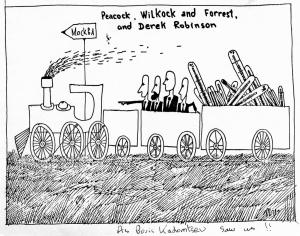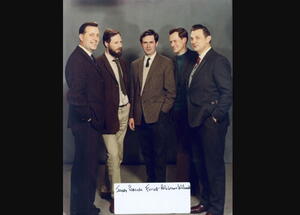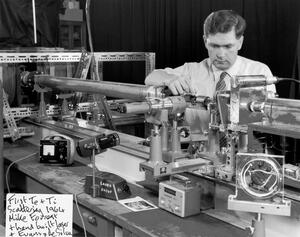Off to Russia with a thermometer
1969 was a thrilling year: Man walked on the Moon, the Concorde made its maiden flight, a generation wallowed in the mud at Woodstock and Charles de Gaulle resigned as president of France. In fusion too, times were exciting: 1969 was the year when an improbable and unprecedented collaboration was established between Culham Laboratories in the UK and the Kurchatov Institute in Moscow—another "giant leap," this time for East-West relations.
The summer before in Novosibirsk, at the Third International Conference on Plasma Physics and Controlled Nuclear Fusion Research—the so-called "Plasma Olympics"—the Russians had presented results obtained in their T-3 Tokamak. The figures were so impressive they were hard to believe: according to the Kurchatov team, plasma temperature in T-3 had reached 10 million degrees and confinement time had exceeded 10 milliseconds—a full order of magnitude higher than in any other fusion machine.
What was at stake for the whole fusion community was huge: if the numbers were right, it meant fusion was feasible—not tomorrow of course, but in a reasonably close future.
The only way to verify the Russians' claim was to set up an independent assessment, a technical "peer review" of unparalleled scope and complexity. And this is precisely what Lev Artsimovitch, the head of fusion research at Kurchatov suggested to his colleague Sebastian "Bas" Pease, the Director of Culham.
At the height of the Cold War, the proposal was a daring one. The political and diplomatic implications and difficulties were considerable but both sides could expect large benefits from the venture: for the Russians, the confirmation of their "fantastic numbers" and for the British, a spectacular test field for the temperature measurement technique, known as "laser scattering," they had been applying to fusion plasmas for the past five years.
In December 1968, less than six months after the Novosibirsk meeting, UKAEA had a team assembled: it consisted of Nicol Peacock, a highly respected spectroscopy specialist; Peter Wilcock, a brilliant technical innovator; Mike Forrest, a pioneer in the new laser scattering techniques; and Derek Robinson, a 27 year old theoretician, also with a laser scattering experience.
In the eyes of the Britons, the Soviet Union was still a closed, mysterious and vaguely threatening world. "We were a bit scared," recalls Mike Forrest. "None of us had connections there. We really didn't know what to expect."
The team and the 5 tonnes of equipment they had assembled settled in at the Kurchatov in the spring of 1969. "Everything looked rather crude," remembers Mike,"Now and then some piece of equipment would stand out as quite sophisticated—military we thought ..."
T-3 had entered operation nine years earlier. It was the third "tokamak" that the Russians had built since the mid-1950s. If the machine's performance could be confirmed, the tokamak concept would change the course of fusion history.
While getting used to day-to-day Russian life and to the "startled looks" they were getting when they walked through the Moscow streets, the British team set about adapting the equipment they had designed to the novel tokamak machine. This meant opening up the torus to fit "windows" and a collimator, setting up vibration-proof optical benches for the laser and aligning its beam through complex optical systems. The activity, remembers Mike Forrest, was "frenetic" and because of the inevitable technical problems, the Russians were growing impatient. "Nerves," he says, "were getting frayed."
This did not prevent the Russian hosts, both high officials and the "man on the street," to be exceptionally kind to their foreign guests. "We got the VIP treatment from the authorities: Bolshoi Ballet, Swan Lake and Sleeping Beauty of course, but also the rare privilege to visit the Treasury in the Kremlin and see the Russian Crown Jewels. Colleagues invited us for ski outings and when we were by ourselves, in the Moscow crowds, people would stop us and warn us about early signs of frostbite. In trams and buses, they would go out of their way to get correct change for us ..."
By early August, the British team had been able to aim their laser into some 88 plasma shots. Most of the temperatures they determined were in the 10 million degrees range, thus confirming Artsimovitch's announcement at the Novosibirsk conference a year earlier.
The British laser scattering measurement on T-3 opened a new era in fusion research. In Princeton, the decision to convert the C-Stellarator into a tokamak was instantly made. Six months later, this Symmetric Tokamak (ST) matched the T-3 results. Other labs in the US, France, Japan, Germany decided to take the tokamak route. "Forty years later," says Mike Forrest, "we feel more than a tinge of pride in our 1969 achievement. After all, we had helped to get tokamaks recognized as the way forward for confined fusion research and, ultimately, to ITER."




